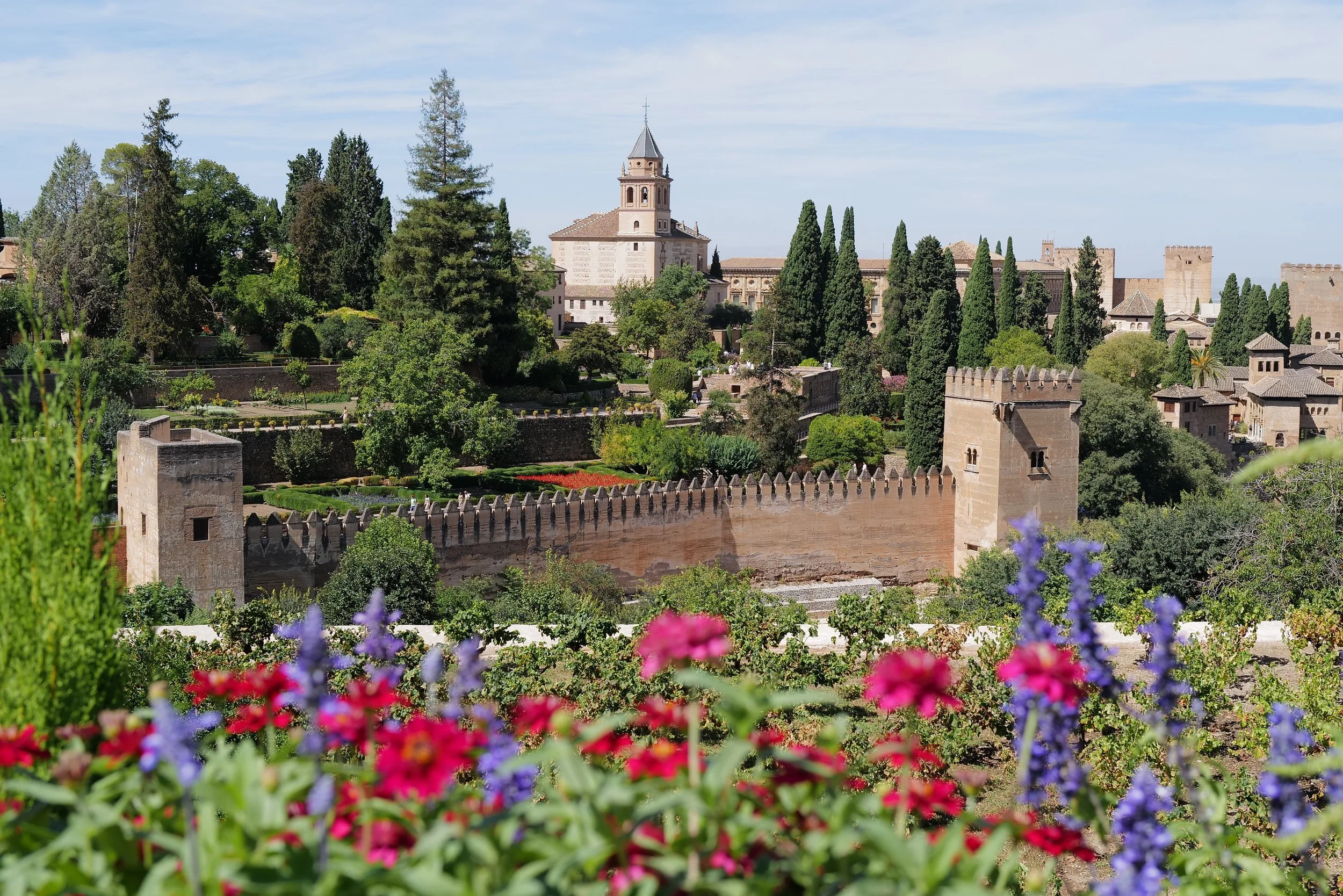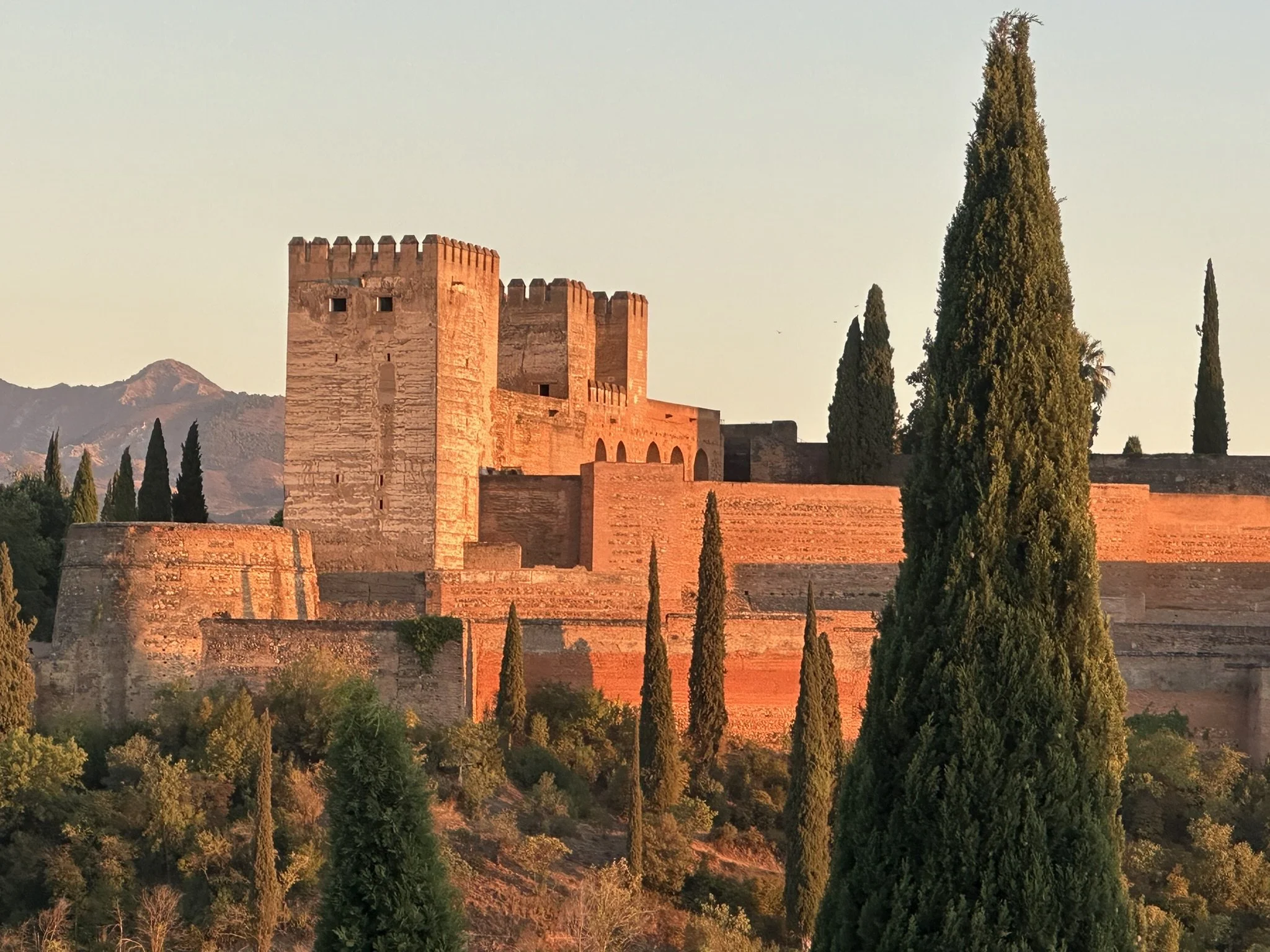The Alhambra Palace and Gardens
A very special treat this year has been to visit Granada and more importantly stay in a hotel on the foothills facing its most famous landmark, The Alhambra Palace.
Built in 1238 by the Nasrid Dynasty a visit to Alhambra and the Generalife Gardens has to be on everybody's bucket list. It is probably one of the most beautifully preserved examples of Moorish architecture in the world. Its scale is immense. The Palace's general condition is incredible, no wonder the authorities have very strict control over who is allowed into its walls - remember to take your passport!
The wonderful gardens of Alhambra and its surrounds have everything to thank to the Moors for their creation and ingenuity in designing them and the Alhambra Palace beyond with access to water 24hrs a day.
Despite the elevated position of the Palace their engineers managed to track back the source of the river Darro. They then built a channel, the Royal Waterway, which took its water from the river some six kilometers upstream and entered the Alhambra via the Generalife Gardens. This is still the main source of water today. A perfect example of modern day garden irrigation at work hundreds of years ago.
Our visit to the Alhambra started with a tour of the Generalife Gardens and the North Pavilion with its water garden courtyard. The Generalife was a retreat(pleasure gardens) where the Granadan monarchs could relax, away from the daily toil and hustle and bustle of the court. There is understandably a degree of formality in the way the gardens are laid out, both to take account of the necessary terracing, the predominance of water features and the popularity of the Cypress tree which the Muslim architects particularly liked due to their straight deep rooted form that allowed close planting and safe proximity to their structures. The effective use of Cypress trees helps create natural verticals among the buildings and walls and helps soften the whole vista.
Above Generalife, the Royal Waterway channels fresh water into expansive cisterns that store it temporarily before carefully distributing the flow to the beautifully planted terraces, intricate decorative water features, and the tranquil water garden courtyard of the North Pavilion. From there, an aqueduct gracefully carries the water onward to the Alhambra, where it is overseen by the imposing fortified Water Tower, a structure that historically played a crucial role in protecting the estate's vital and precious water supply.
In the gardens of Generalife and Alhambra feature an abundance of plants, including Acanthus, Agapanthus, Anemones, Bourgainvillea, Day Lilies, Delphiniums, Honeysuckle, Magnolia, Roses, Salvia, Wisteria. Whilst we were visiting the gardeners were also tending to some new beds that had been turned over to perennial meadows which looked beautiful in the hot Granada sunshine.
The best time to visit Granada and the Alhambra is in the Spring ( April - June), or Autumn ( September - October) when temperatures are pleasant but not too hot. We flew to Malaga then took the train to Granada which was very easy. You dont need a car - you can walk and take taxi's, but try and stay central though. Do not go to Granada without booking your train tickets and also entrance tickets to Alhambra Palace before you leave. Once there you will find it is impossible to get tickets. For more information about
Alhambra Palace see www.alhambradegranada.org , plus for tickets www.alhambra-entradas.org



